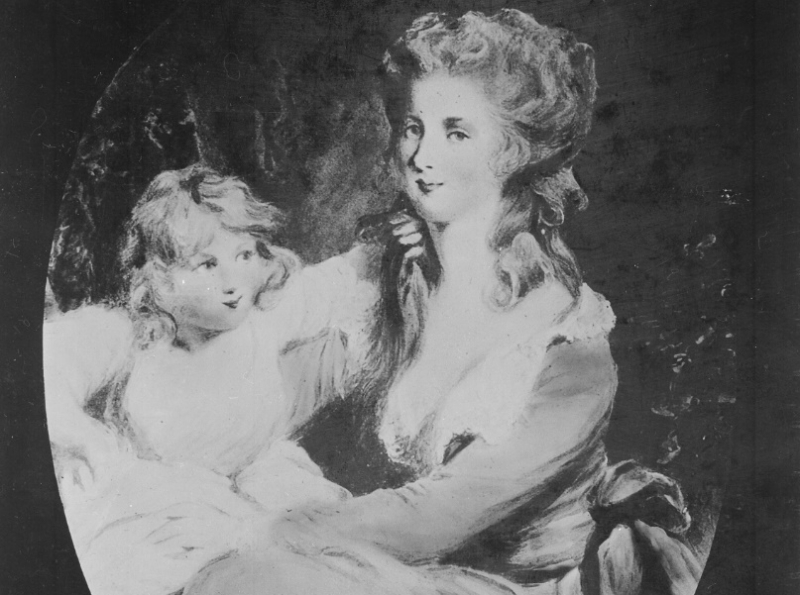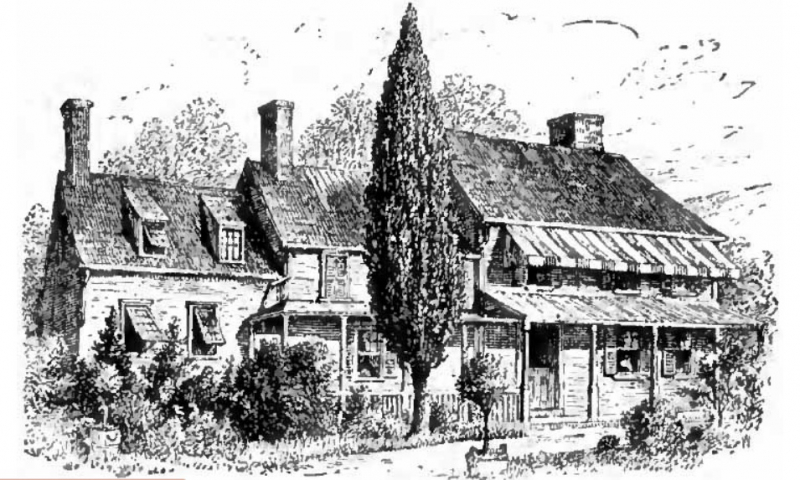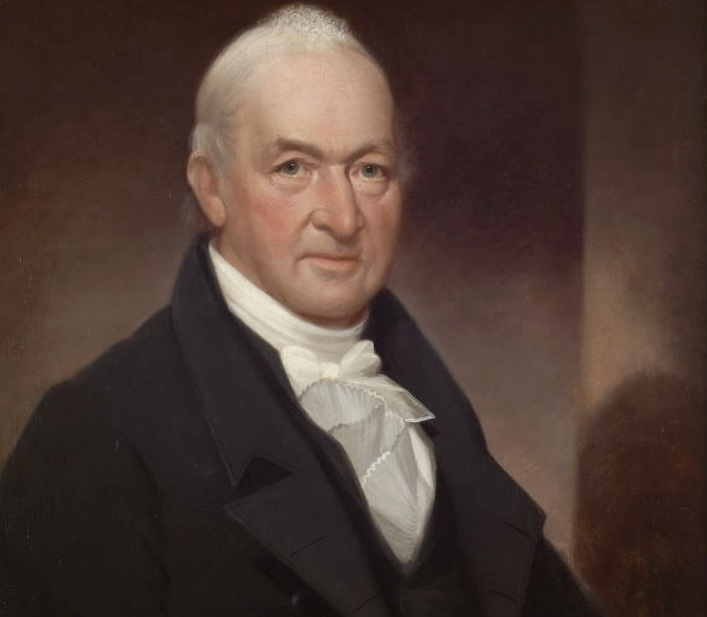Top 9 Facts About Benedict Arnold and Peggy Shippen
Benedict Arnold's treason during the Revolutionary War is one of the most infamous occurrences in American history. His treachery was motivated by a variety of ... read more...factors, including his marriage to Margaret "Peggy" Shippen in 1779. Here are the nine interesting facts about Benedict Arnold and Peggy Shippen you should know.
-
Before joining the growing American army, Benedict Arnold was a successful merchant and smuggler. With the support of the Lathrops, Arnold established himself as a pharmacy and bookseller in New Haven, Connecticut, in 1762. He worked hard and was successful, and he was able to rapidly develop his firm. In 1763, he redeemed money borrowed from the Lathrops, repurchased the family homestead that his father had sold while he was severely in debt, and resold it a year later for a large profit. He started a business with Adam Babcock, another young New Haven trader, in 1764. Using the proceeds from the sale of his farmhouse, they purchased three trading ships and developed a thriving West Indies trade.
In the course of his business, he traveled widely throughout New England and from Quebec to the West Indies, often in command of one of his own ships. The Sugar Act of 1764 and the Stamp Act of 1765 significantly reduced mercantile trade in the colonies. The Stamp Act motivated Arnold to join the chorus of voices in protest, as well as to join the Sons of Liberty, a secret group that supported opposition to the Stamp Act and other restrictive Parliamentary policies. Arnold did not participate in any public rallies at first, but like many merchants, he continued to do business openly in contravention of the Parliamentary Acts, which amounted to smuggling.

en.wikipedia.org 
britannica.com -
One interesting fact we want to introduce to you is that Benedict Arnold is one of the best battlefield commanders in the American Army during the early years of the Revolutionary War. When the war began in 1775, he was a merchant in the Atlantic Ocean. Arnold started the war as a captain in the Connecticut militia, a position he was elected in March 1775. The following month, his troop marched northeast to assist in the siege of Boston that followed the Battles of Lexington and Concord. He joined the rising American army outside of Boston and distinguished himself with acts of intelligence and valor, such as the capture of Fort Ticonderoga in 1775. At the Battle of Valcour Island in Lake Champlain in 1776, Benedict Arnold used defensive and delay tactics, giving American forces time to build New York's fortifications. His performance in the Battle of Ridgefield, Connecticut, earned him the rank of major general.
During the Siege of Fort Stanwix, Benedict Arnold performed relief operations for the Americans, as well as vital activities during the pivotal 1777 Battles of Saratoga, in which he suffered leg injuries that sidelined him for several years. Arnold often alleged that the Continental Congress passed him up for promotion and that other officers were given credit for some of his successes.

Battle of Lexington -en.wikipedia.org 
Capture of Fort Ticonderoga -en.wikipedia.org -
It is a fact that he married his wife Peggy Shippen on April 8, 1779. In the late summer of 1778, Shippen met Arnold, the Continental military commander of Philadelphia, and he began wooing her despite their differences. Arnold soon after sent her father a letter asking for her hand in marriage, but Shippen was wary of Arnold owing to Arnold's legal issues. The Supreme Executive Council of Pennsylvania initiated eight official charges against Arnold in 1779 for corruption and wrongdoing with federal and state funds, and he was subsequently convicted on two comparatively minor counts. Despite this, Edward Shippen eventually granted Arnold and Peggy permission to marry on April 8, 1779.
Margaret Shippen was born in Philadelphia on July 11, 1760, the fourth and youngest daughter of Edward Shippen IV and Margaret Francis. She was born into a distinguished Philadelphia family that included two mayors of Philadelphia and the founder of Shippensburg, Pennsylvania. She was a young woman who enjoyed music, embroidery, and drawing, as well as political studies. She looked up to her father and learned about politics, finance, and the events that led to the American Revolution from him. She met Arnold while he was the city's military commander following the British evacuation in 1778. On April 8, 1779, they married in the Shippen townhouse on Fourth Street, and Arnold soon began plotting with the British to switch sides.

Her father Chief Justice Edward Shippen- en.wikipedia.org 
Peggy Shippen and her child -commons.wikimedia.org -
Another fact is that Washington appointed Arnold military commander of the city in 1778. Arnold was severely wounded in his left leg during the battle of Bemis Heights on October 7, 1777, the same leg that had been damaged during his assault on Quebec in 1775. It required many operations and months of recovery in an Albany, New York hospital for him to be able to return to duty, and he would always walk with a limp, his left leg two inches shorter than his right.
In June 1778, the British withdrew from Philadelphia, and Washington appointed Arnold military commander of the city. Even before the Americans reclaimed control of Philadelphia, Arnold began making financial plans to benefit from the change in power. He engaged in a number of business transactions in order to profit from war-related supply flows and benefit from his authority's protection.
Such schemes were not uncommon among American officers, but Arnold's attempts were occasionally thwarted by powerful local politicians like Joseph Reed, who eventually gathered enough evidence to accuse him publicly. In a letter to Washington in May 1779, Arnold urged a court martial to clear his name, saying, "Having become a cripple in the service of my country, I little expected to meet ungrateful returns."

Benedict Arnold -simple.wikipedia.org 
Joseph Reed - en.wikipedia.org -
One of the most interesting facts about Benedict Arnold and Peggy Shippen is that his wife Margaret "Peggy" Shippen was a spy. She was the second wife of General Benedict Arnold and the highest-paid spy in the American Revolution. On April 8, 1779, she married Arnold. Despite military regulations on communicating with the enemy, Shippen and her pals found ways to stay in touch with paramours across the combat lines. Some of this communication was made possible thanks to the efforts of Philadelphia merchant Joseph Stansbury.
Arnold met with Philadelphia merchant Joseph Stansbury in early May 1779, who then went surreptitiously to New York with a tender of Arnold's services to Sir Henry Clinton. Stansbury defied Arnold's orders not to engage anybody else in the operation and crossed the British border to see Jonathan Odell in New York. Odell was a Loyalist who worked with William Franklin, the son of Benjamin Franklin and the final colonial governor of New Jersey. On May 9, Franklin brought Stansbury to Major André, the newly appointed British intelligence head. This was the start of Arnold and André's secret correspondence, which included his wife Peggy as a willing intermediary at times, and culminated more than a year later with Arnold's switch of sides. Many historians believe she helped Arnold's efforts to switch sides by secretly negotiating with her friend André and relaying their signals to one other.

Henry Clinton -britannica.com 
John André -ushistory.org -
It is a fact that Major John André served as the liaison between Arnold and Clinton. During the American Revolutionary War, John André was a major in the British Army and the commander of the British Secret Service in America. The Continental Army executed him as a spy for supporting Benedict Arnold's attempted surrender of the fort at West Point, New York, to the British.
Arnold was in close communication with British Major John André, an up-and-coming officer who developed a name in Philadelphia while dealing with the British high command. André had also made friends with several of the city's young women, including Peggy Shippen. While he may have courted her momentarily, it never amounted to anything other than presenting André with a direct link to Benedict Arnold. When he became the chief of the British spy operation in New York, Peggy Shippen stayed in touch with him. Arnold's plans to swap sides were assisted by her; he began secret negotiations with her buddy André, and she carried their signals to each other.
André met with General Clinton, who delegated broad authority to him to pursue Arnold's offer. This initial letter initiated a conversation about the types of help and intelligence that Arnold might supply, as well as instructions for future communication. Letters were to be sent through Peggy Arnold's women's circle, but only Peggy would be aware that some letters had instructions to be passed on to André, written in both code and invisible ink, with Stansbury acting as the courier.

Henry Clinton -en.wikipedia.org 
John André -en.wikipedia.org -
Arnold took charge of West Point on August 3, 1780. On August 15, he received a coded letter from André containing Clinton's final offer: £20,000 and no reimbursement for his losses. Due to communication issues, neither side knew for several days that the other was in agreement with that offer. Arnold's dispatches continued to record Washington's military movements and provide information about French reinforcements on the way. Peggy ultimately delivered Clinton's agreement to the terms to him on August 25.
Arnold's command at West Point also granted him command over the whole American-controlled Hudson River, from Albany all the way down to the British lines outside New York City. While on his way to West Point, Arnold reconnected with Joshua Hett Smith, who had spied for both sides and owned a house on Hudson's western bank some 15 miles south of West Point. After establishing himself at West Point, Arnold began gradually eroding its fortifications and military strength. On the Hudson chain, needed repairs were never ordered. Troops were liberally distributed within Arnold's command area but only a little at West Point or provided on request to Washington. Simultaneously, he attempted to deplete West Point's supplies so that a siege would be more likely to succeed.

Arnold's headquarters at West Point -commons.wikimedia.org 
Joshua Hett Smith House -en.wikipedia.org -
One of the interesting facts about Benedict Arnold and Peggy Shippen is that Arnold’s treasonous plan was uncovered on September 3, 1780. On August 30, Arnold sent a letter to André accepting Clinton's terms and proposing a meeting through still another intermediary: William Heron, a member of the Connecticut Assembly whom he trusted. In an ironic twist, Heron went to New York oblivious of the letter's significance, and offered his own services as a spy to the British. He then returned to Connecticut, skeptical of Arnold's motives, and gave the letter to the commander of the Connecticut militia. General Parsons set it aside, interpreting it as a coded business dialogue. Four days later, Arnold used the services of a prisoner of war's wife to send a ciphered letter with similar content to New York. A meeting was eventually scheduled for September 11 near Dobb's Ferry. This meeting was disrupted when British gunboats in the river fired on his boat, unaware of his planned arrival.
On September 21, Arnold and André finally met at the Joshua Hett Smith House. James Livingston, fired on the HMS Vulture, the ship scheduled to transport André back to New York. The captain, Andrew Sutherland, received a splinter in his nose as a result of this battle, but the splinter caused the Vulture to retire, forcing André to return to New York by land. Arnold created passes for André to allow him to cross through the lines, as well as plans for West Point.
They discovered the papers exposing the West Point conspiracy and forwarded them to their superiors, but André persuaded the unsuspecting Colonel John Jameson, to whom he was transferred, to send him back to Arnold at West Point, but he never arrived. Major Benjamin Tallmadge was a member of the Continental Army's Culper Ring, a spy network established under Washington's instructions, and he requested that Jameson have the prisoner intercepted and returned. Jameson reluctantly called back the lieutenant who had been delivering André to Arnold's custody, but he then dispatched the same lieutenant as a messenger to inform Arnold of André's arrest.

A map of West Point in 1780 -en.wikipedia.org 
Benjamin Tallmadge -en.wikipedia.org -
One of the interesting facts about Benedict Arnold and Peggy Shippen is that when Arnold’s treasonous plan was uncovered, her wife rejected her involvement in the plot. In anticipation of the British assault of West Point, General Arnold met with André on the Hudson River on September 21, 1780, and provided him documents and plans detailing the fortifications there. André was apprehended as he rode approaching British territory on Saturday, September 23, the documents were seized, and the scheme was revealed. Arnold received a note on Monday, September 25, announcing André's capture and possession of treasonous papers and maps. General George Washington had planned to visit Arnold at his residence two miles south of West Point that morning. Arnold ran upstairs to Peggy before fleeing to HMS Vulture on the Hudson River.
Shippen Peggy Arnold pretended to be hysterical in order to deceive General Washington and his staff into believing she had nothing to do with her husband's treason. Arnold may have escaped due to the delay caused by her histrionics, leaving Peggy with their young boy. She traveled to Philadelphia to remain with her family out of fear for her safety. She also pretended to be innocent when asked about her spouse, although knowing where he was. Authorities in Philadelphia quickly discovered a letter from André to Peggy written from British-occupied New York and used it to prove Arnold's wife was engaged in the treason. As a result, the Supreme Executive Council of Pennsylvania expelled her from Philadelphia. Peggy and her young son were led by her father to the Hudson River banks in November 1780, where she boarded a boat to New York City to join Arnold.

a coded letter -upload.wikimedia.org 
George Washington -upload.wikimedia.org






























